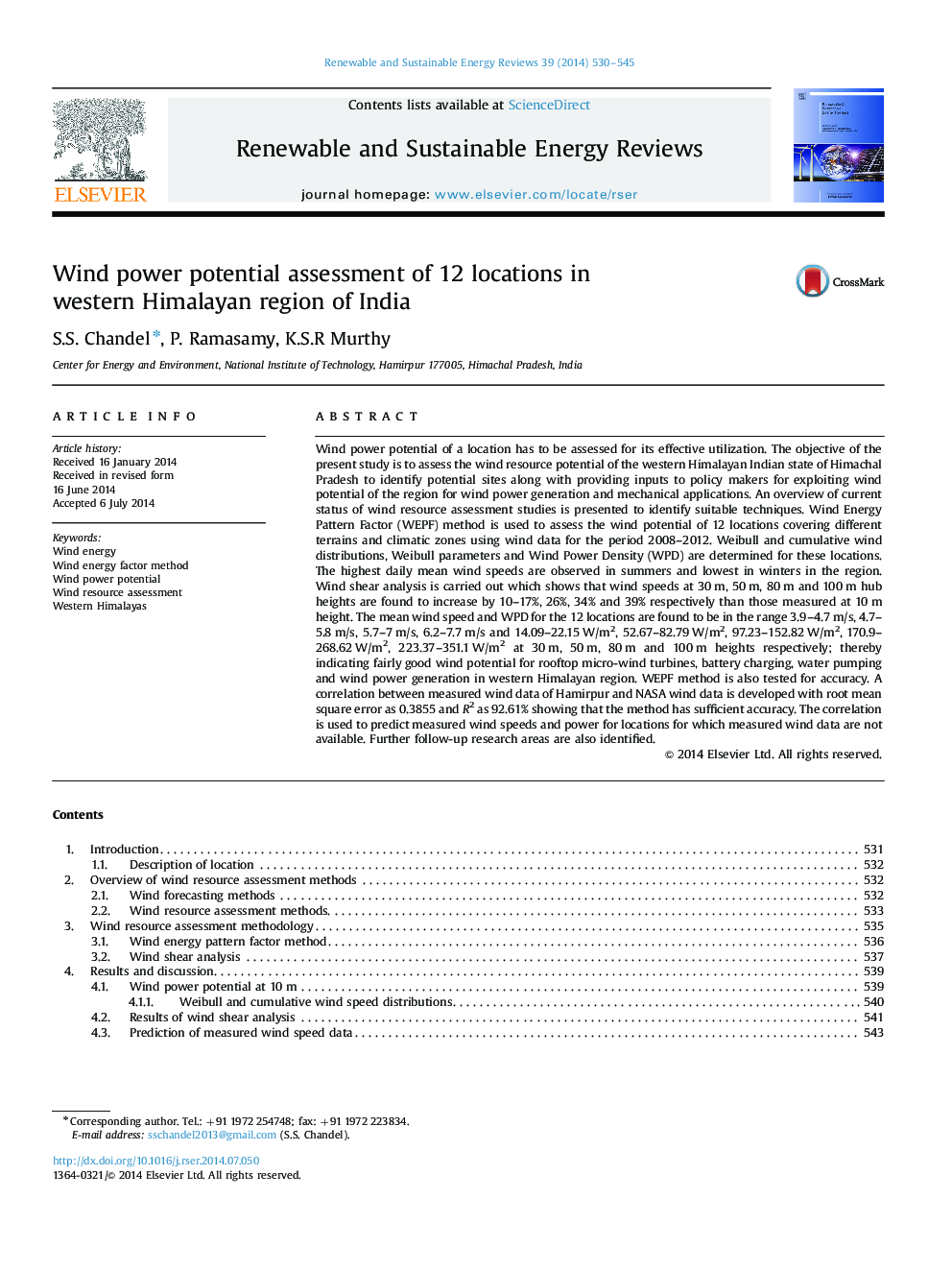| کد مقاله | کد نشریه | سال انتشار | مقاله انگلیسی | نسخه تمام متن |
|---|---|---|---|---|
| 8119012 | 1522346 | 2014 | 16 صفحه PDF | دانلود رایگان |
عنوان انگلیسی مقاله ISI
Wind power potential assessment of 12 locations in western Himalayan region of India
ترجمه فارسی عنوان
ارزیابی بالقوه انرژی باد از 12 محل در منطقه هیمالیا غربی هند
دانلود مقاله + سفارش ترجمه
دانلود مقاله ISI انگلیسی
رایگان برای ایرانیان
کلمات کلیدی
انرژی باد، روش فاکتور انرژی باد، پتانسیل قدرت باد، ارزیابی منابع باد، هیمالیا غربی،
موضوعات مرتبط
مهندسی و علوم پایه
مهندسی انرژی
انرژی های تجدید پذیر، توسعه پایدار و محیط زیست
چکیده انگلیسی
Wind power potential of a location has to be assessed for its effective utilization. The objective of the present study is to assess the wind resource potential of the western Himalayan Indian state of Himachal Pradesh to identify potential sites along with providing inputs to policy makers for exploiting wind potential of the region for wind power generation and mechanical applications. An overview of current status of wind resource assessment studies is presented to identify suitable techniques. Wind Energy Pattern Factor (WEPF) method is used to assess the wind potential of 12 locations covering different terrains and climatic zones using wind data for the period 2008-2012. Weibull and cumulative wind distributions, Weibull parameters and Wind Power Density (WPD) are determined for these locations. The highest daily mean wind speeds are observed in summers and lowest in winters in the region. Wind shear analysis is carried out which shows that wind speeds at 30Â m, 50Â m, 80Â m and 100Â m hub heights are found to increase by 10-17%, 26%, 34% and 39% respectively than those measured at 10Â m height. The mean wind speed and WPD for the 12 locations are found to be in the range 3.9-4.7Â m/s, 4.7-5.8Â m/s, 5.7-7Â m/s, 6.2-7.7Â m/s and 14.09-22.15Â W/m2, 52.67-82.79Â W/m2, 97.23-152.82Â W/m2, 170.9-268.62Â W/m2, 223.37-351.1Â W/m2 at 30Â m, 50Â m, 80Â m and 100Â m heights respectively; thereby indicating fairly good wind potential for rooftop micro-wind turbines, battery charging, water pumping and wind power generation in western Himalayan region. WEPF method is also tested for accuracy. A correlation between measured wind data of Hamirpur and NASA wind data is developed with root mean square error as 0.3855 and R2 as 92.61% showing that the method has sufficient accuracy. The correlation is used to predict measured wind speeds and power for locations for which measured wind data are not available. Further follow-up research areas are also identified.
ناشر
Database: Elsevier - ScienceDirect (ساینس دایرکت)
Journal: Renewable and Sustainable Energy Reviews - Volume 39, November 2014, Pages 530-545
Journal: Renewable and Sustainable Energy Reviews - Volume 39, November 2014, Pages 530-545
نویسندگان
S.S. Chandel, P. Ramasamy, K.S.R Murthy,
